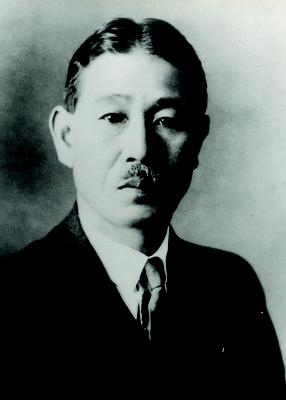In mathematics, injective sheaves of abelian groups are used to construct the resolutions needed to define sheaf cohomology.
Tsuruichi Hayashi was a Japanese mathematician and historian of Japanese mathematics. He was born in Tokushima, Japan.
In differential geometry, a hypercomplex manifold is a manifold with the tangent bundle equipped with an action by the algebra of quaternions in such a way that the quaternions define integrable almost complex structures.
Vikraman Balaji is an Indian mathematician and is currently a professor at Chennai Mathematical Institute. He completed his doctorate in Mathematics under the supervision of C. S. Seshadri. His primary area of research is in algebraic geometry, representation theory and differential geometry. Balaji was awarded the 2006 Shanti Swarup Bhatnagar Award in Mathematical Sciences along with Indranil Biswas "for his outstanding contributions to moduli problems of principal bundles over algebraic varieties, in particular on the Uhlenbeck-Yau compactification of the Moduli Spaces of µ-semistable bundles." He was elected Fellow of the Indian Academy of Sciences in 2007, Fellow of the Indian National Science Academy in 2015 and was awarded the J.C. Bose National Fellowship in 2009.
In mathematics, the Bogomolov–Miyaoka–Yau inequality is the inequality
In mathematics, a fake projective plane is one of the 50 complex algebraic surfaces that have the same Betti numbers as the projective plane, but are not isomorphic to it. Such objects are always algebraic surfaces of general type.
In mathematics, surfaces of class VII are non-algebraic complex surfaces studied by (Kodaira 1964, 1968) that have Kodaira dimension −∞ and first Betti number 1. Minimal surfaces of class VII (those with no rational curves with self-intersection −1) are called surfaces of class VII0. Every class VII surface is birational to a unique minimal class VII surface, and can be obtained from this minimal surface by blowing up points a finite number of times.
In mathematics, a Kato surface is a compact complex surface with positive first Betti number that has a global spherical shell. Kato (1978) showed that Kato surfaces have small analytic deformations that are the blowups of primary Hopf surfaces at a finite number of points. In particular they have an infinite cyclic fundamental group, and are never Kähler manifolds. Examples of Kato surfaces include Inoue-Hirzebruch surfaces and Enoki surfaces. The global spherical shell conjecture claims that all class VII surfaces with positive second Betti number are Kato surfaces.
In the mathematical field of functional analysis, a nuclear C*-algebra is a C*-algebra A such that for every C*-algebra B the injective and projective C*-cross norms coincides on the algebraic tensor product A⊗B and the completion of A⊗B with respect to this norm is a C*-algebra. This property was first studied by Takesaki (1964) under the name "Property T", which is not related to Kazhdan's property T.
In mathematics, Alexander Grothendieck (1957) in his "Tôhoku paper" introduced a sequence of axioms of various kinds of categories enriched over the symmetric monoidal category of abelian groups. Abelian categories are sometimes called AB2 categories, according to the axiom (AB2). AB3 categories are abelian categories possessing arbitrary coproducts. AB5 categories are the AB3 categories in which filtered colimits of exact sequences are exact. Grothendieck categories are the AB5 categories with a generator.
Shigeo Sasaki (佐々木 重夫) was a Japanese mathematician working on differential geometry who introduced Sasaki manifolds. He retired from Tohoku University's Mathematical Institute in April 1976.
Indranil Biswas is an Indian mathematician. He is professor of mathematics at the Tata Institute of Fundamental Research, Mumbai. He is known for his work in the areas of algebraic geometry, differential geometry, and deformation quantization.
The article "Sur quelques points d'algèbre homologique" by Alexander Grothendieck, now often referred to as the Tôhoku paper, was published in 1957 in the Tôhoku Mathematical Journal. It revolutionized the subject of homological algebra, a purely algebraic aspect of algebraic topology. It removed the need to distinguish the cases of modules over a ring and sheaves of abelian groups over a topological space.
Patrick Michael Grundy was an English mathematician and statistician. He was one of the eponymous co-discoverers of the Sprague–Grundy function and its application to the analysis of a wide class of combinatorial games.

Matsusaburo Fujiwara was a Japanese mathematician and historian of mathematics.
Kaoru Ono is a Japanese mathematician, specializing in symplectic geometry. He is a professor at the Research Institute for Mathematical Sciences (RIMS) at Kyoto University.
Toshiki Mabuchi is a Japanese mathematician, specializing in complex differential geometry and algebraic geometry. In 2006 in Madrid he was an invited speaker at the International Congress of Mathematicians. Mabuchi is known for introducing the Mabuchi functional.
In the mathematical field of differential geometry, a Kenmotsu manifold is an almost-contact manifold endowed with a certain kind of Riemannian metric. They are named after the Japanese mathematician Katsuei Kenmotsu.
In the mathematical field of differential geometry, an almost-contact structure is a certain kind of geometric structure on a smooth manifold. Such structures were introduced by Shigeo Sasaki in 1960.
Morihiko Saitō is a Japanese mathematician, specializing in algebraic analysis and algebraic geometry.

